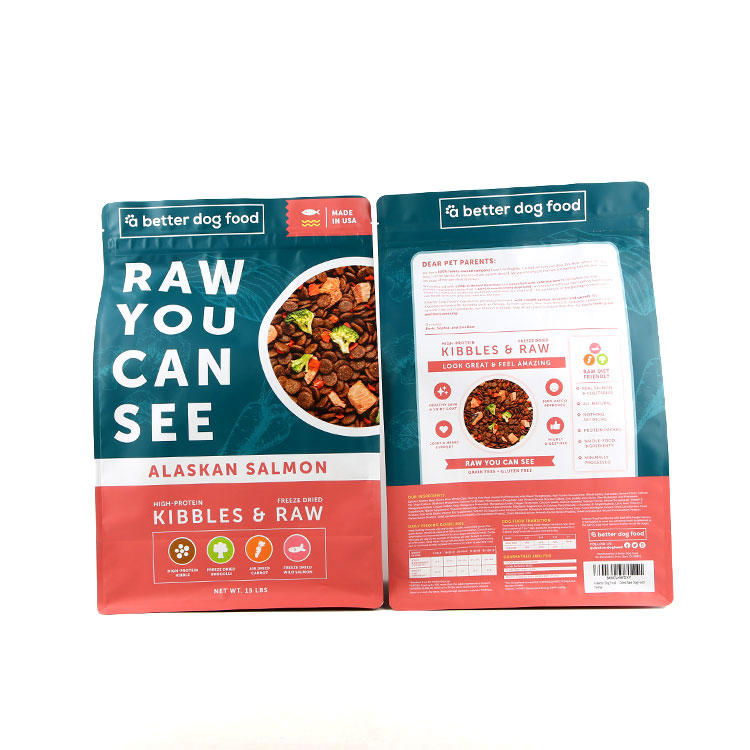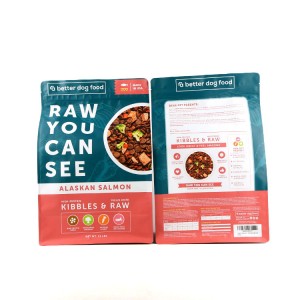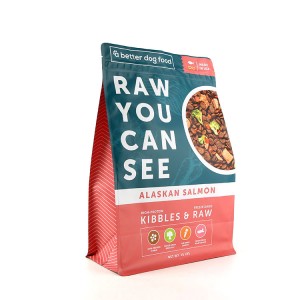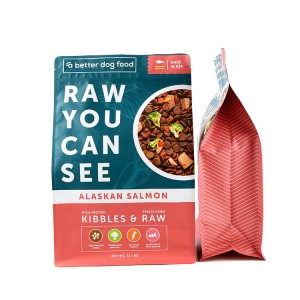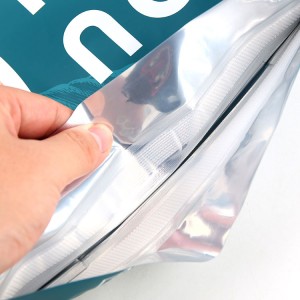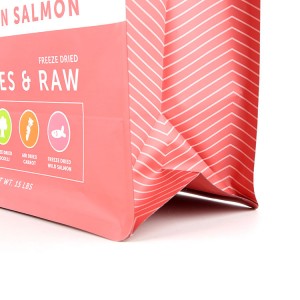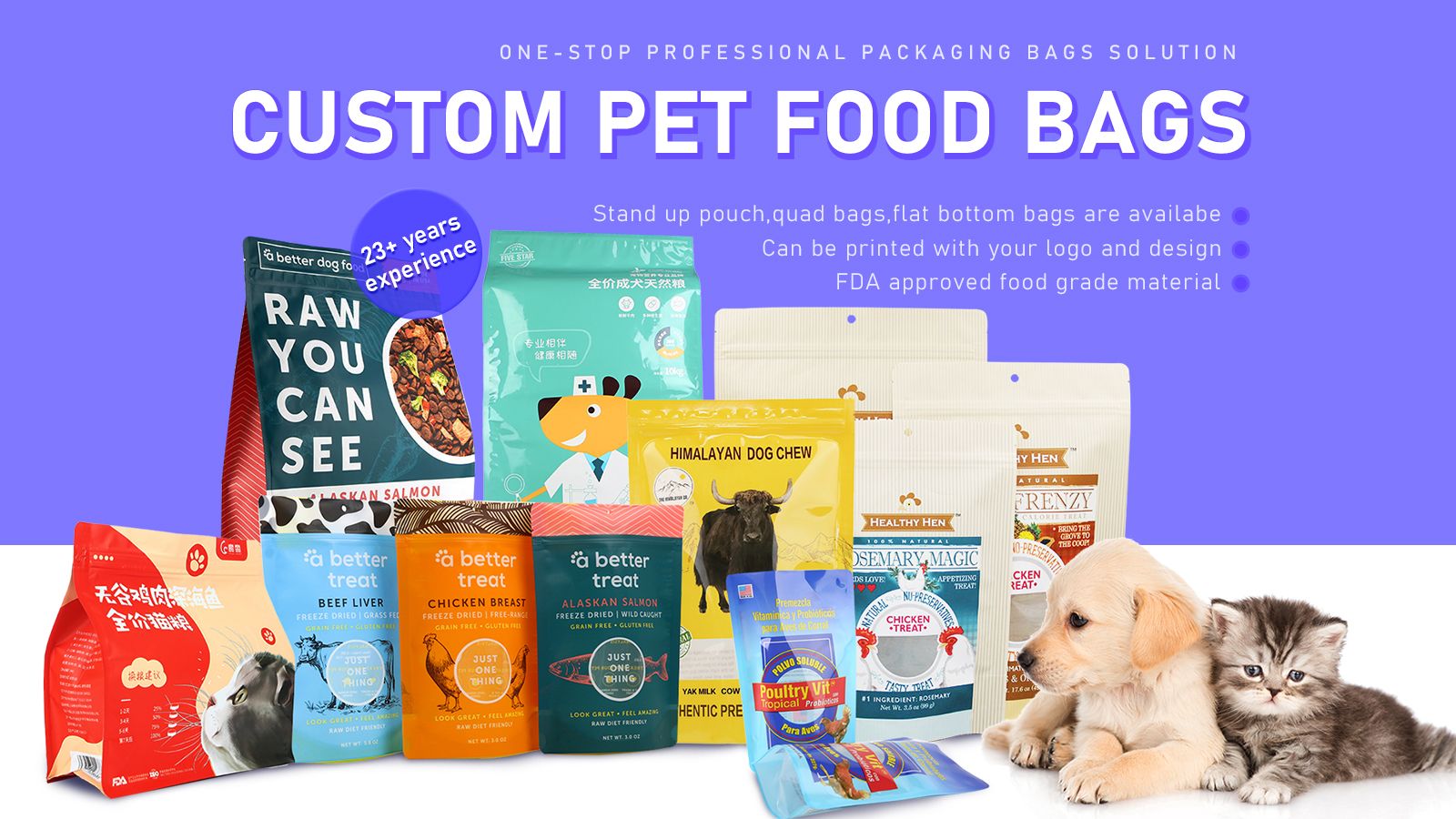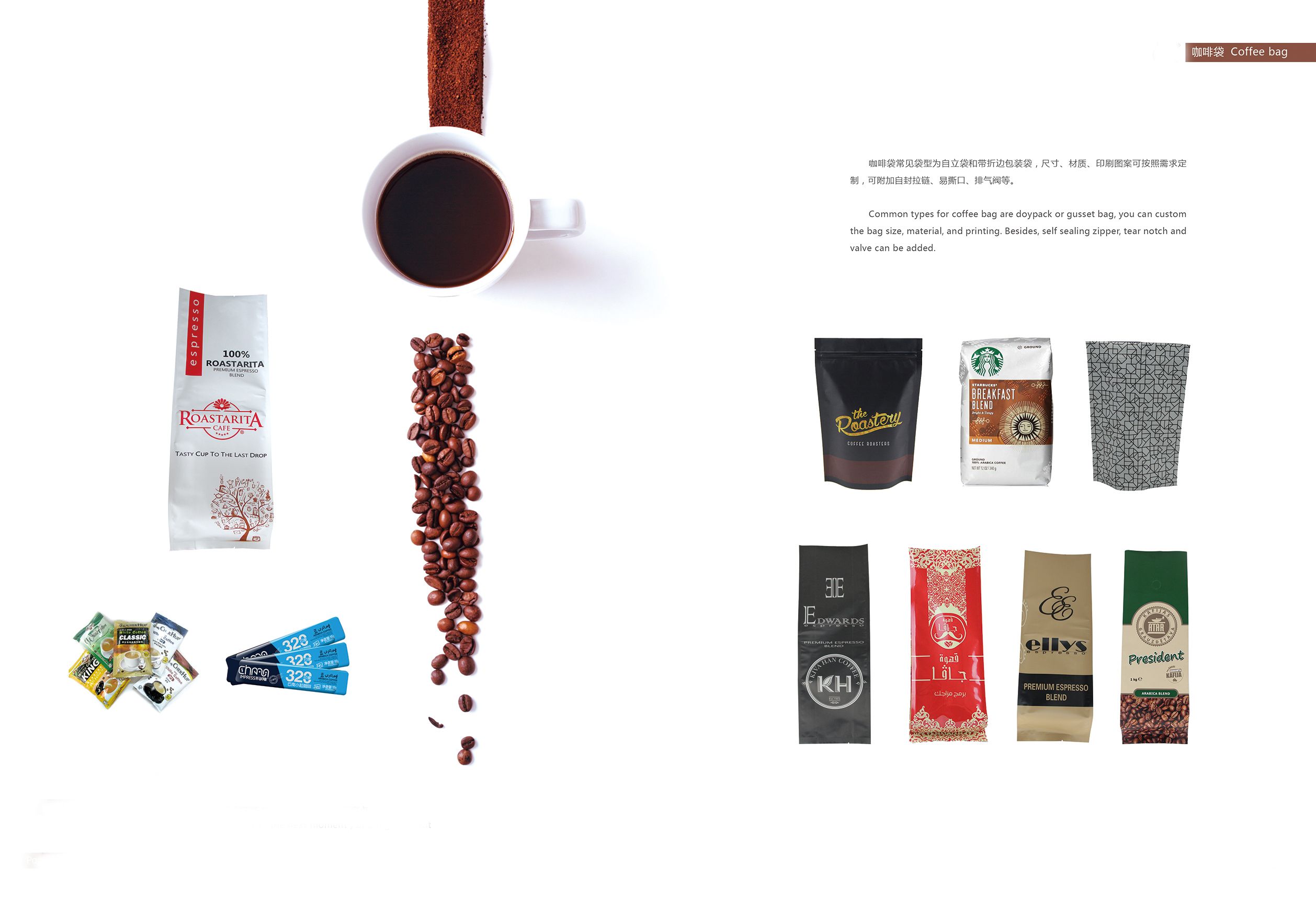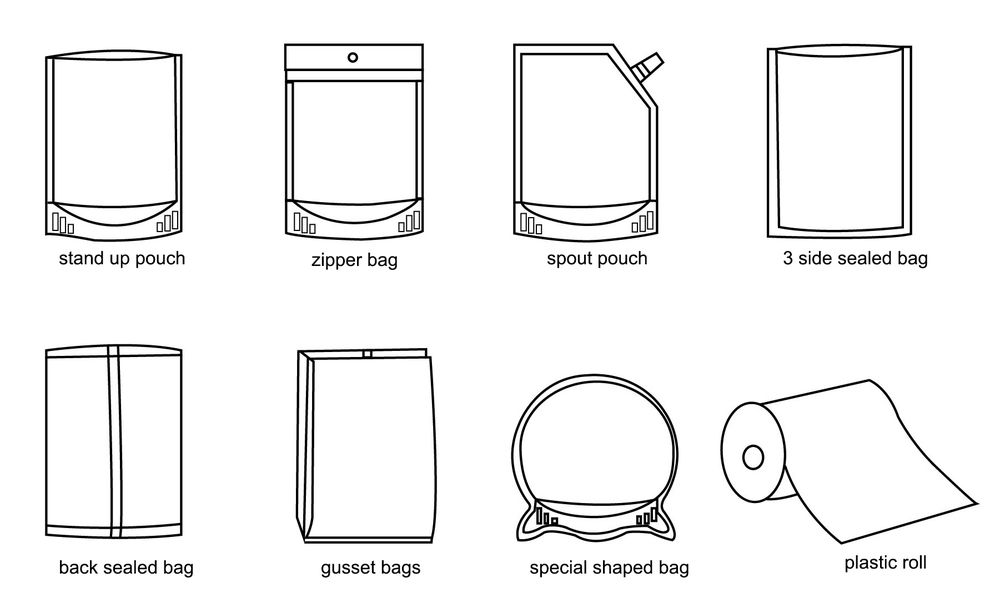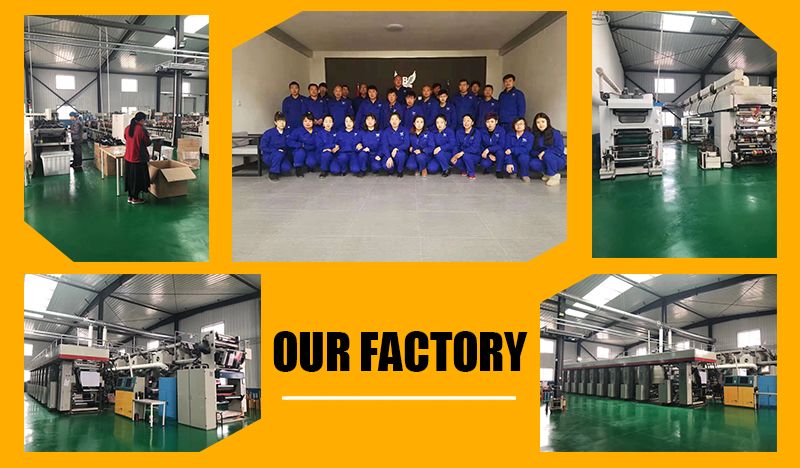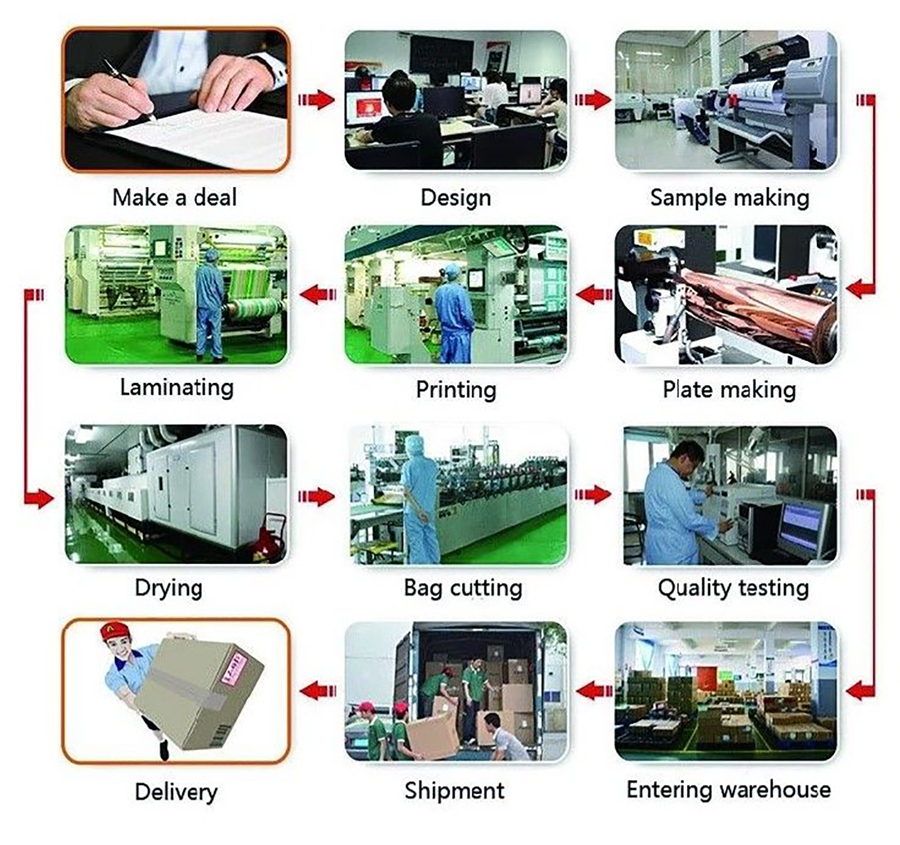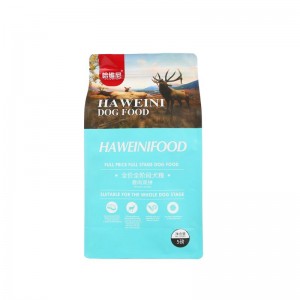
Products
Custom Resealable Flat Bottom Pet Food Eco Friendly Plastic Recyclable Pet Food Packaging Bag
Food Eco Friendly Plastic Recyclable Pet Food Packaging Bag
1. Material Selection:
Plastic Films:Common materials include polyethylene (PE), polypropylene (PP), and polyester (PET). These materials are durable, moisture-resistant, and provide excellent barrier properties.
Metalized Films:Some pet food bags incorporate metalized films, often aluminum, to enhance barrier properties, such as protection against moisture and oxygen.
Kraft Paper:In eco-friendly packaging options, kraft paper may be used as an outer layer, providing a natural and rustic appearance while still offering protection.
2. Bag Styles:
Flat Pouches:Used for smaller quantities of pet food or treats.
Stand-Up Pouches:Ideal for larger quantities, these bags have a gusseted bottom that allows them to stand upright on store shelves.
Quad-Seal Bags:These bags have four side panels for stability and ample branding space.
Block Bottom Bags:Featuring a flat base, these bags provide stability and an attractive presentation.
3. Closure Mechanisms:
Heat Sealing:Many pet food bags are heat-sealed to create an airtight closure, preserving the freshness of the food.
Resealable Zippers:Some bags are equipped with resealable ziplock-style closures, allowing pet owners to easily open and close the bag while keeping the contents fresh.
4. Barrier Properties:Pet food bags are designed to offer strong barriers against moisture, oxygen, and UV light to prevent spoilage and maintain the nutritional quality of the food.
5. Custom Printing:Most pet food bags can be customized with branding, product information, imagery, and nutritional details to attract pet owners and convey product information effectively.
6. Size and Capacity:Pet food bags come in various sizes to accommodate different quantities of food, ranging from small pouches for treats to large bags for bulk pet food.
7. Regulations:Ensure compliance with regulations and standards related to pet food packaging materials and labeling, including food safety and pet product labeling requirements.
8. Eco-Friendly Options:Some manufacturers offer eco-friendly pet food packaging materials made from recyclable or biodegradable materials to appeal to environmentally conscious consumers.

